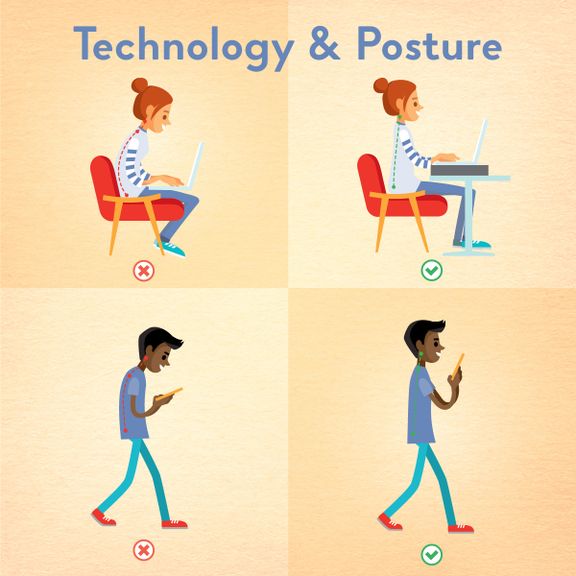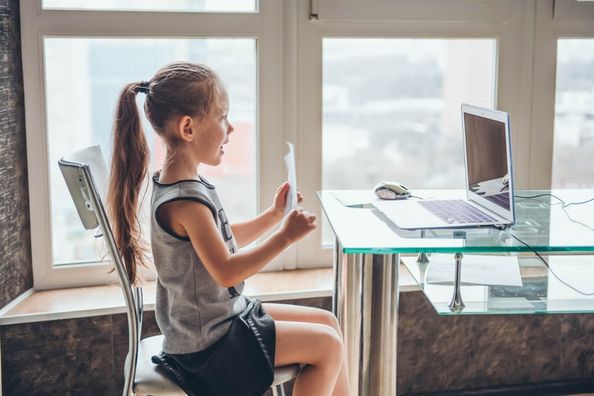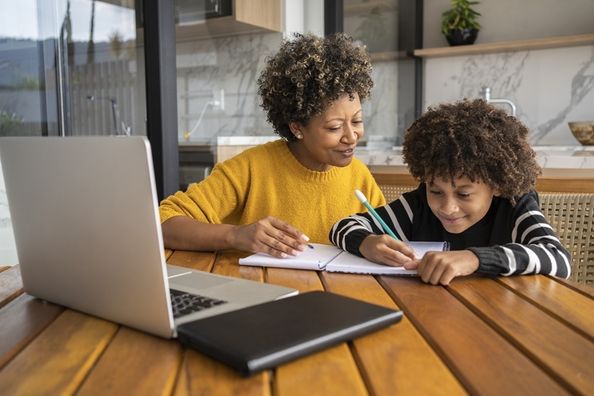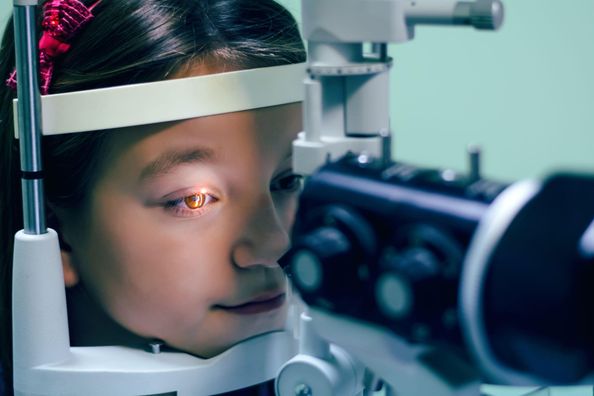Technology is everywhere — smartphones, tablets, laptops, video games, and now remote learning — and kids, especially teens, are using these devices more than ever. In fact, a recent survey found that 45 percent of teens (13−17) report that they’re online almost constantly, while an additional 44 percent report they’re online several times a day. That’s a tremendous amount of screen time that continues to increase every year, especially now with most school districts beginning the 2020 school year with e‑learning.
Take a moment to picture your child as they use their phone or laptop. You’re likely envisioning your child’s slumped shoulders, rounded back and forward-protruding neck, reclining in a chair or lying on their bed. It’s an image many parents share, and many tell their kids to “sit up straight.” However, the impact of bad posture may reach beyond just a slouched appearance.
Bad posture means more for children and teens than having a “pain in the neck.”
It’s no surprise that neck pain from tech usage is a common complaint, as a forward-thrusting head puts additional strain on muscles and ligaments of the neck. Neck pain is just one of a variety of medical issues related to bad posture that may have a significant negative impact on health. It’s especially important to correct bad posture in children and teens as their bodies may, over time, adapt to mal-position and poor posture.
Without proper skeletal form, it may be difficult for the body to perform at peak function. Some health risks of prolonged bad posture include:
Postural Kyphosis
Muscles and bones get used to being hunched over, leading to a rounded back and shoulders. Exercising and strengthening back muscles can help better support the spine; however some children may need physical therapy to help correct postural kyphosis.
Poor balance
Long term changes to the spine can impact motor skills and affect balance.
Fatigue
Slouching reduces lung capacity and depth of respiration, which may increase fatigue because the body isn’t getting the full amount of oxygen needed to function properly.
Body pains
Neck, back and joint pain, as well as headaches, are common physical ailments resulting from bad posture.
Decreased self-esteem
Slumped posture is associated with a lack of self-confidence and exhibiting negative moods and can even be an indicator of depression. Conversely, tall posture is directly related to higher self-esteem, elevated moods and increased stamina.
What can you do?
The good news is that children can improve their posture — it may just take some time to overcome their bad postural habits:

Practice makes perfect
Teach your child or teen correct posture while using tech devices, helping them get their bodies into correct position. You may even want to show them before and after pictures so they can see and better understand the difference.
Stand up
As your child or teen spends a lot of time on a laptop or tablet for e‑learning, consider using a stand-up desk to reduce strain on their neck and back, minimizing the dangers of prolonged sitting. If a stand-up desk isn’t an option, ensure the monitor, chair, and desk are set correctly to the height of your child.
Eye level
Bring phones and tablets up to eye level to read, or prop on a table to engage correct posture.
Stretch out
Encourage your child to stand up every 20 to 30 minutes to stretch and exercise their neck and shoulders. Deep breathing exercises are also beneficial.
Take a break
Shut down the electronics and engage in more active movement — go for a walk, run around and play. There are also parental control apps that schedule alerts and time limits for “no tech time”.
Listen to your child’s body
If your child is complaining of pain, especially in the neck, between the shoulder blades or in the arms, it may be indicative of a more serious health issue. Consult with your physician to rule out significant health issues arising from bad posture.
If your child or teen is complaining of pain, or you are concerned about their posture, visit their pediatrician or family physician as a first step to evaluate their spine and posture. Depending on their findings, the doctor may recommend your child see a pediatric orthopaedist for a comprehensive exam and to create a plan to correct your child’s posture.
Click here for more information or call 1−630−790−1872 to schedule an appointment with one of our pediatric orthopaedists.
Health Topics:







